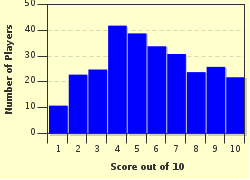Quiz Answer Key and Fun Facts
1. Which one of these functions would NOT be controlled by the autonomic nervous system?
2. The autonomic nervous system is a division of what?
3. The anterior or ventral rami of thoracic segmental spinal nerves form which type of nerve?
4. The autonomic nervous system can be split into two divisions: the sympathetic division and the parasympathetic division. What is the main function of the parasympathetic division?
5. How many pairs of cranial nerves are there in total?
6. Which cranial nerve is known as the vagus nerve?
7. What does the parasympathetic nervous system use as a neurotransmitter?
8. The sympathetic nervous system is of a thoraco-lumbar origin. The nerves leave the spinal cord in segmental spinal nerve T1 down to which spinal nerve?
9. In the sympathetic nervous system, when preganglionic fibres leave the spinal cord in segmental spinal nerves, they can sometimes run through the sympathetic chain without synapsing. What type of nerves do they emerge as?
10. Which of the following nerves runs down to and supplies the diaphragm?
Source: Author
Milky1989
This quiz was reviewed by FunTrivia editor
crisw before going online.
Any errors found in FunTrivia content are routinely corrected through our feedback system.

